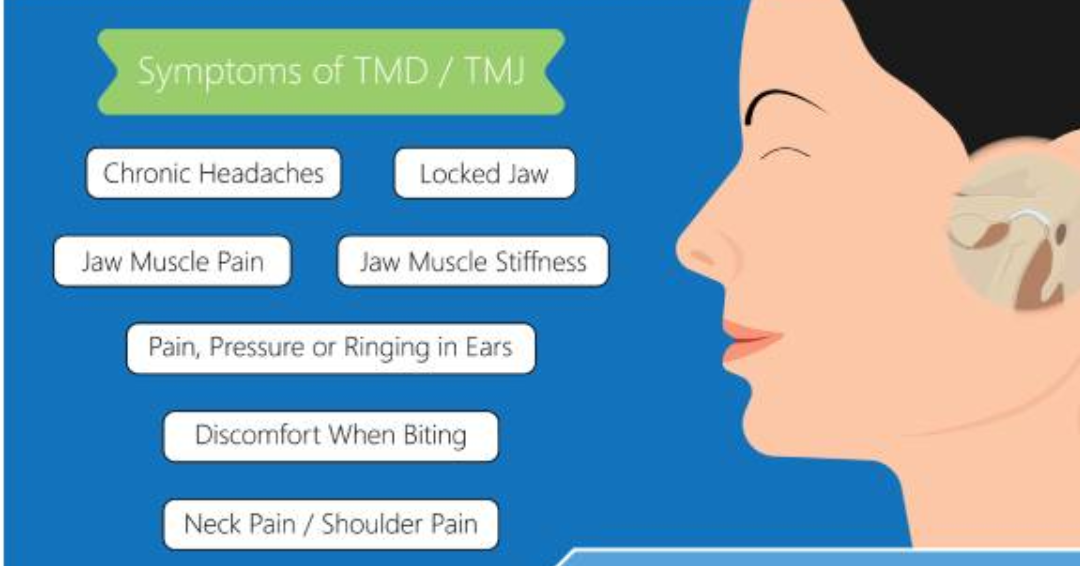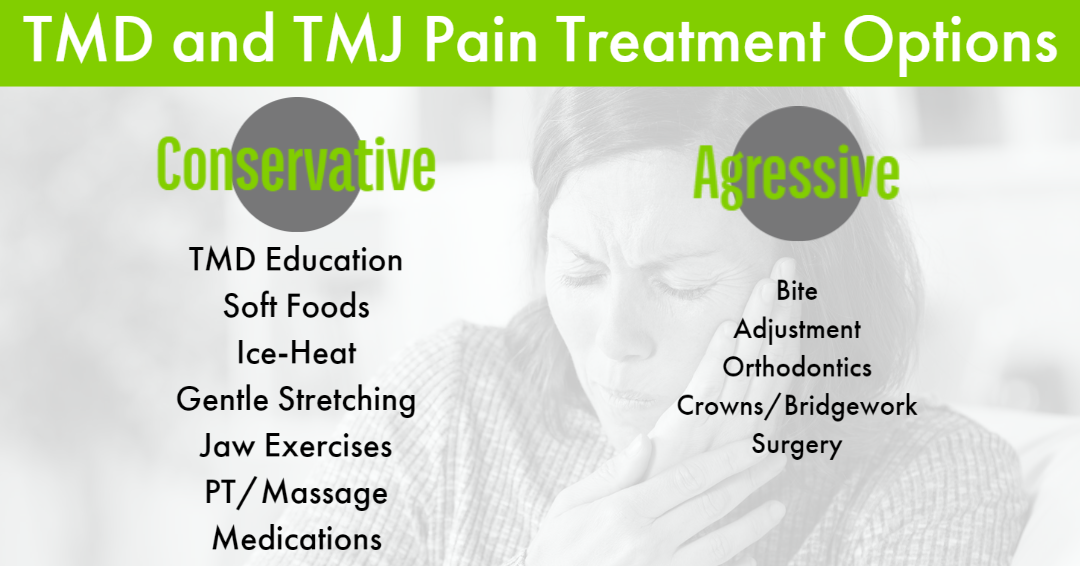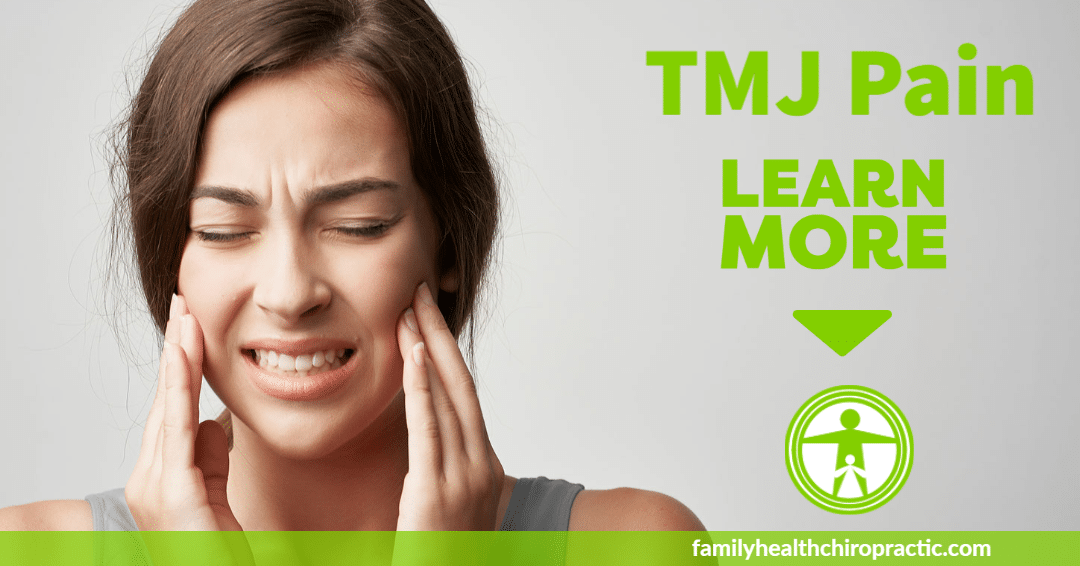If you experience continuous and ongoing jaw pain near your ear, your jaw or the muscles on the side of your face, sometimes accompanied by clicking or popping and restricted jaw movement, you could be experiencing TMD or Temporomandibular disorders.
Sometimes people incorrectly use the term TMJ to refer to these problems, when in fact TMJ is the abbreviation for the temporomandibular joint – or jaw joint itself.
While we all have a TMJ, not everyone has TMD. Temporomandibular joint disorders describe a group of conditions characterized by pain and dysfunction of the TMJ and/or the muscles surrounding it. It's not always so easy to figure out exactly what's causing these symptoms, but the good news is that most TMD cases can be resolved without invasive treatment. In fact, it's important to exhaust all such reversible remedies before moving on to anything irreversible, such as bridgework or surgery.
In this article we're going to share some information regarding causes, signs and symptoms and treatments for TMD.
Causes of Temporomandibular Joint Disorders (TMD or TMJ Pain)
As with any other joint, the TMJ can be subject to problems that involve inflammation, strained muscles, tendons and sprained ligaments or disks.
In many cases, it’s not known what truly causes TMJ disorders, but we do know TMD is influenced by genes, gender (women appear to be more prone to it), and age. Physical and psychological stress can also be a factor.
Some of the most common conditions associated with TMD include:
- arthritis of the TMJ
- erosion of the joint
- habitual grinding and clenching of the teeth
- structural jaw issues present at birth
- growth disorders
Some of the most common risk factors associated with TMD include:
- female hormones (it’s theorized that estrogen may play a role in the development of TMJ)
- poor posture that strains the muscles of the neck and face
- prolonged stress
- joint hypermobility

What are the common symptoms of TMD or TMJ disorders?
Clicking Sounds — Some people with TMD hear a clicking, popping or grating sound coming from the TMJ when opening or closing the mouth. This is usually caused by a shifting of the disk inside the joint. Clicking by itself is not a significant symptom because 1/3 of all people have jaw joints that click. However, anytime clicking is accompanied by pain limited movement, as in the jaw getting “stuck” in an open or closed position, would indicate TMD.
Muscle Pain — This can be felt in the cheeks (masseter muscles) and temples (temporalis muscles), where the two big pairs of jaw-closing muscles are located. If you feel soreness and stiffness upon waking up in the morning, it's often related to habits such as clenching and/or grinding the teeth at night. If you have this type of nocturnal habit, we can have a nightguard custom-made for you that should be very helpful in decreasing the force applied to your teeth, which will in turn allow your muscles to relax and relieve pressure on your jaw joints.
Joint Pain — Pain that's actually coming from one or both jaw joints technically would be described as arthritis (“arth” – joint; “itis” – inflammation) of the TMJ. When we look at radiographs (x-ray pictures) we find that some people have arthritic-looking TMJs but no symptoms of pain or dysfunction; others have significant symptoms of pain and dysfunction but their joints look normal on r
Some of the most common TMJ symptoms include:
- Jaw pain.
- Headaches.
- Earaches.
- Pain in the neck or shoulders.
- Difficulty opening your mouth wide.
- Jaws that “lock” in the open- or closed-mouth position.
- Clicking, popping, or grating sounds in the jaw joint when opening or closing your mouth.
- A tired feeling in your face.
- Difficulty chewing.
- Tinnitus, or ringing in your ears.
- Changes in the way your teeth fit together.
- Swelling on the side of your face.
- Tooth pain.

TMD Therapy & Treatment Options
The current medical model of care is based on research creating a sequence of therapies ranging from conservative (reversible and non-invasive) procedures, to escalating aggressive (irreversible) procedures.
Here's a clinical algorithm that increases from the conservative to aggressive treatments:
- TMD Education – first, get a dentist to examine your TMJ, undergo X ray examination and learn about all the treatment options and strategies
- Soft Foods – a temporary solution is to transition into a soft-food diet, to reduce stress to your muscles and joints
- Ice/Heat – ice/heat can be applied to the muscles along the jaw or inflamed joint
- Gentle Stretching – because muscles may be inflamed or undergoing spasm, small gentle movements and stretches may help
- Jaw Exercises – there are physical therapy, retraining and stretching exercises that can help the muscles surrounding the TMJ joint
- Pterygoid Massage – the pterygoid muscles are two of the four muscles of mastication. Massaging these muscles can help to reduce tension experienced from TMD or TMJ disorder.
- Medications – non-steroidal anti-inflammatories, muscle relaxants and cortisone shot are all medical interventions that may be useful in extreme TMD cases
- Bite Appliance – wearing a professionally made custom bite guard at night decreases forces on teeth from clenching and grinding
More Aggressive (irreversible treatment)
- Bite Adjustment
- Orthodontics
- Crowns/Bridgework
- Surgery
Specific Exercises, Stretches and Massage Techniques for TMD
Cervical Retractions
Sit or stand looking forward with good posture. Tuck your chin to create a double chin. Hold this position for 3-5 seconds. Return to the starting position. Focus your vision on a spot on the wall to avoid neck flexion or extension. To progress, place a finger on your chin, and apply backwards pressure at end range. Imagine that your head is on drawer slides. Keep your mouth closed. Perform 1 set of 10 repetitions 3-10 times per day. Alternately, this exercise may be performed standing with your back against a wall. Your buttocks and shoulder blades should be in contact with the wall. Tuck your chin to make a “double chin” until the base of your skull contacts the wall, relax and repeat as directed.
Chin Depression
Begin in good posture with your ears directly over your shoulders. Place the tip of your tongue at the roof of your mouth, just behind your front teeth as if to say the letter, “N.” Slowly open your mouth while keeping your tongue touching the roof of your mouth. Make sure your chin does not protrude forward. Close your jaw and repeat 10 repetitions. Perform this exercise hourly or as directed.
Begin in good posture with your ears directly over your shoulders. Place the tip of your tongue at the roof of your mouth, just behind your front teeth as if to say the letter, “N.” Open your mouth slightly. While holding this position, apply gentle 6 second pressures to your jaw (with your finger) in downward, upward and sideways directions. Repeat this series 6 times per day, or as directed.
TMD and TMJ Dysfunction Summary
Non-surgical intervention for TMD has been shown to be as effective as any surgical intervention. Management should be conservative and simple, focusing on three main points: manual therapies, exercise, and avoidance of aggravating activities.
If you're experiencing TMD or TMJ pain, chiropractors are capable of helping because they adjust bones, joints, and muscles to improve function and reduce pain in their patients. One option a TMJ chiropractor can provide is to make these adjustments to help ease TMD/TMJ symptoms, including pain: Manipulate the jaw joint so it can move more easily.
In addition, chiropractors can help you to understand the daily exercises and stretches that are proven to be just as effective (if not better) than surgery or more aggressive medical options.



